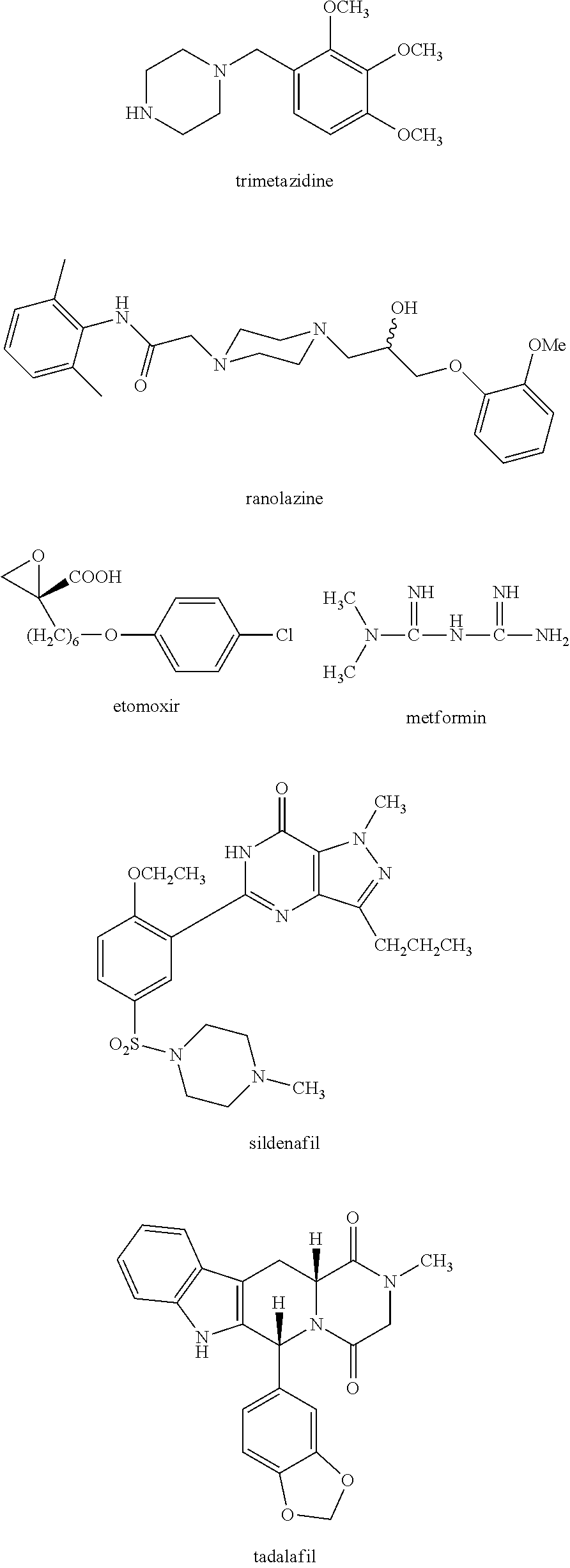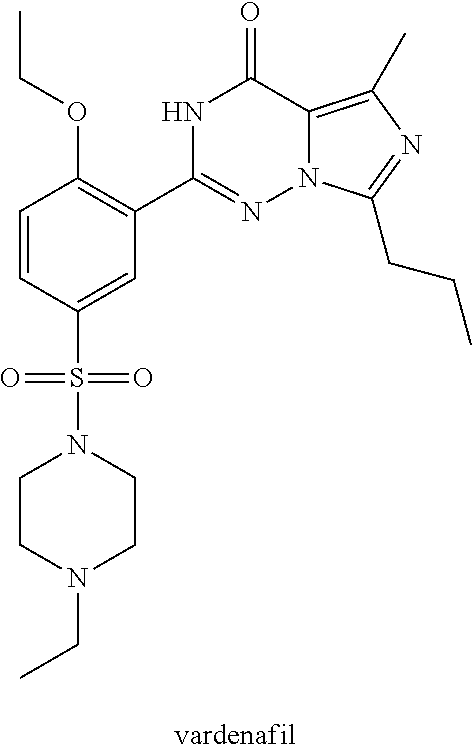Fatty Acid Oxidation Inhibitors Treating Hyperglycemia and Related Disorders
a technology of fatty acid oxidation inhibitors and hyperglycemia, which is applied in the direction of biocide, drug composition, metabolic disorders, etc., can solve the problems of reducing the perfusion of tissues, causing tissue ischemia and hypoxia, and abnormal function of structural proteins and other proteins that normally have a long half li
- Summary
- Abstract
- Description
- Claims
- Application Information
AI Technical Summary
Benefits of technology
Problems solved by technology
Method used
Image
Examples
Embodiment Construction
[0042]Current front line therapies for treating hyperglycemia and T2DM focus on reducing glucose levels (e.g., as predicted by reduction in % HbA1c). Because patients with hyperglycemia and T2DM are at increased risk for morbidity and mortality due to life threatening sequelae, such as T2DM-associated cardiovascular disease, retinopathy, nephropathy and neuropathy, adjunctive therapy that seeks to reduces risk factors for such diseases (e.g., lipid reducing agents, antihypertensive agents, antianginal agents) may be administered secondary to glucose lowering therapy. The addition of adjunctive therapy can reduce morbidity and mortality in hyperglycemic or T2DM patients due to, for example, cardiovascular disease. However, there are currently no front line therapies that effectively lower glucose levels and also reduce the incidence of life threatening sequelae of hyperglycemia and T2DM, or that reduce morbidity and mortality due to sequelae of hyperglycemia and T2DM, including T2DM-...
PUM
| Property | Measurement | Unit |
|---|---|---|
| Volume | aaaaa | aaaaa |
| Mass flow rate | aaaaa | aaaaa |
| Mass flow rate | aaaaa | aaaaa |
Abstract
Description
Claims
Application Information
 Login to View More
Login to View More - R&D
- Intellectual Property
- Life Sciences
- Materials
- Tech Scout
- Unparalleled Data Quality
- Higher Quality Content
- 60% Fewer Hallucinations
Browse by: Latest US Patents, China's latest patents, Technical Efficacy Thesaurus, Application Domain, Technology Topic, Popular Technical Reports.
© 2025 PatSnap. All rights reserved.Legal|Privacy policy|Modern Slavery Act Transparency Statement|Sitemap|About US| Contact US: help@patsnap.com


